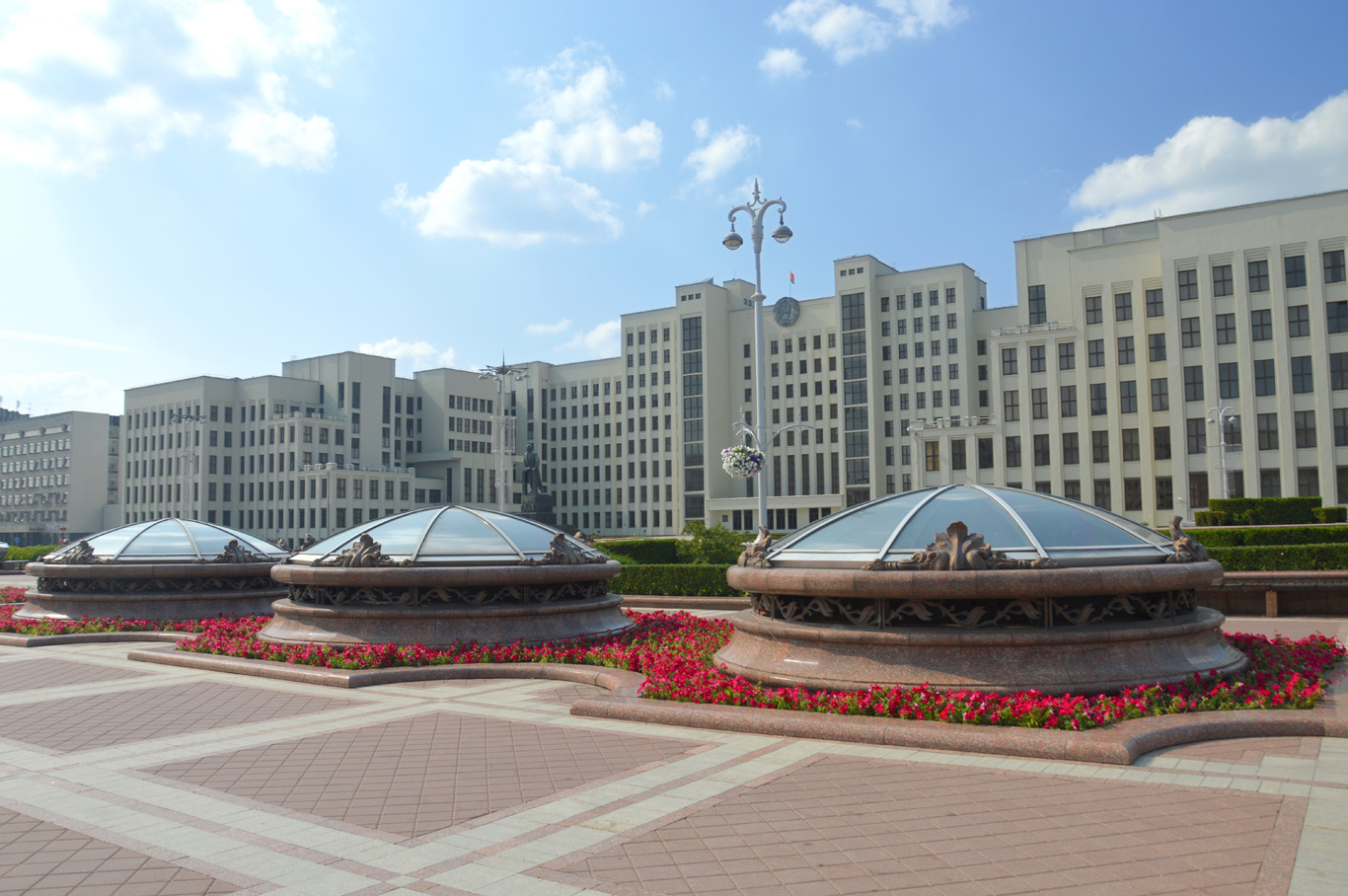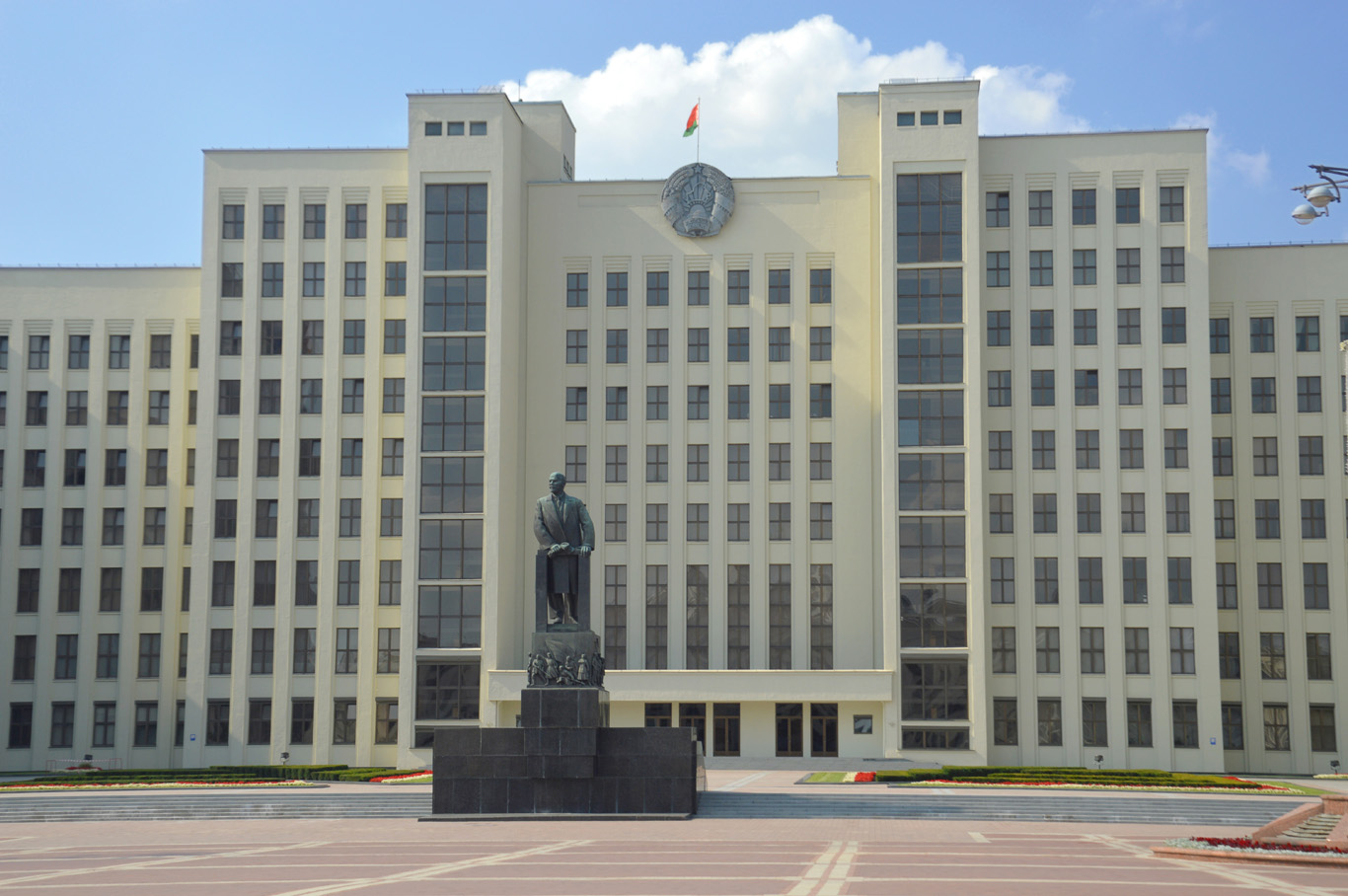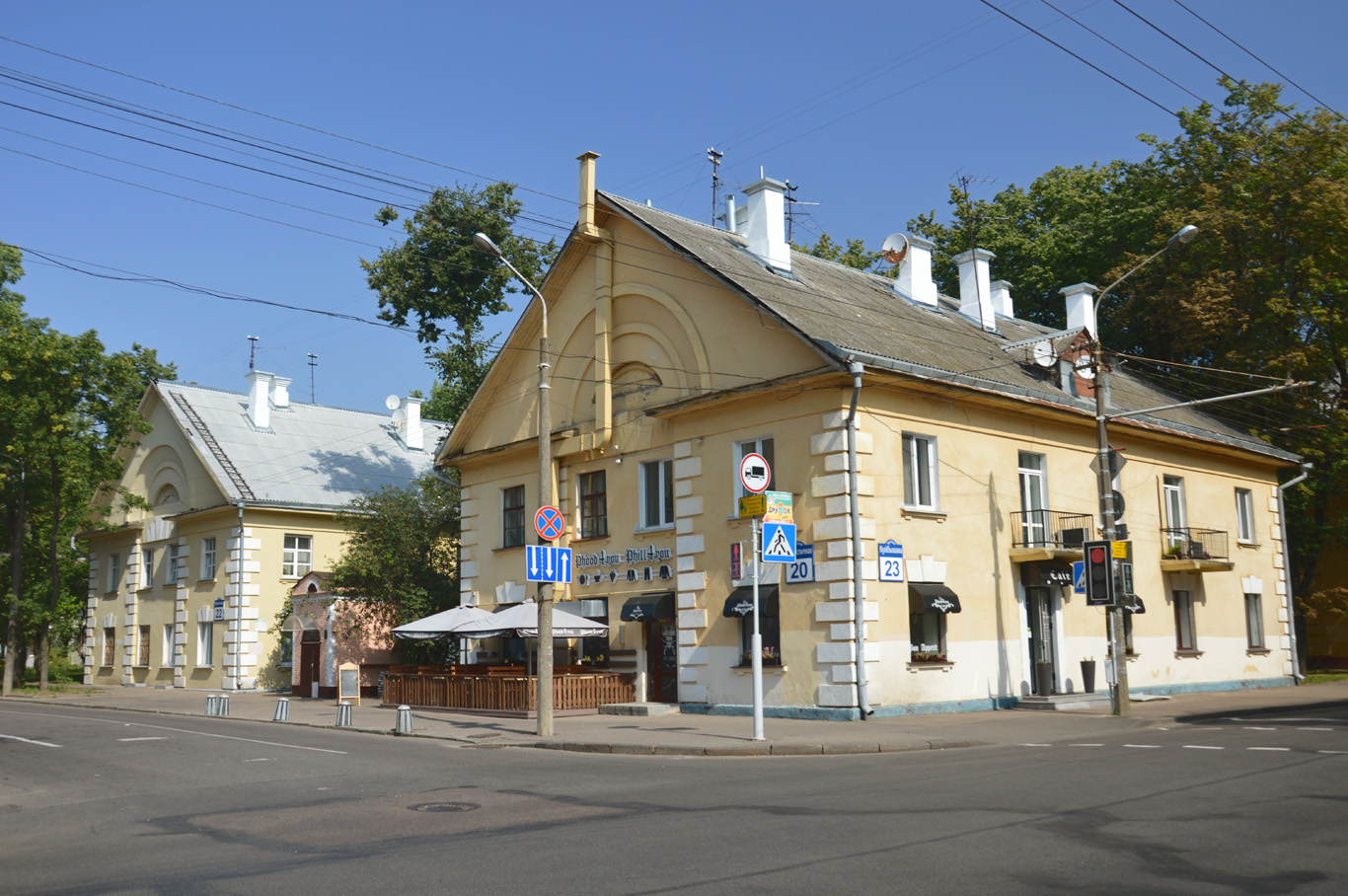Minsk is one of those European cities that are usually unheard of, both by Western Europeans and tourists visiting Europe. Tourist guides dedicated to Europe rarely mention anything about Belarus. Some people are even surprised it exists at all.
It seemed to me that Minsk was one of the most unknown among all the capitals on the old continent (although later, it turned out that there's another - even less popular - Chisinau in Moldova which we also visited). Having been to so many unpopular destinations, the fact that no one else was interested in visiting Minsk was one of the main reasons we got intrigued about it and, contrary to the popular trend, we really wanted to see it - does it really feel like a police state of Europe's last dictatorship? Is it gloomy, filled with communist-era Stalinist architecture? Are the locals cold and unapproachable?
How to get to Minsk - Belarus Visa Requirements
Getting to Minsk is very easy and straightforward for most of the countries now. However, it hasn't always been this way. In 2016 on the way to Russia, we tried to visit Minsk via Vilnius using the "on arrival" visa procedure that could grant a 48-hour stay. Unfortunately, the staff at the airport in Vilnius didn't know about this possibility and we were refused to board the plane. Nothing helped: neither talking to the manager nor showing the terms and conditions from the official governement website. We had to stay in Vilnius and skip Belarus whatsoever.
Since last year, there is no need to apply for any visas and it's easy to visit Belarus for 5 days by flying into Minsk. We decided we would try again. This time, the passport control went very smoothly and without any problems. No questions asked. You just need to present a proof of travel insurance and you're free to go!
Minsk airport is surprisingly modern and there are regular buses operating between the airport and the city. The journey takes around 45 minutes and costs around 3 EUR/2.5 USD.
Why was Minsk so surprising?
The best time to visit Belarus is obviously the summer - the skies are clear, the days are long and it's a pleasure to walk around. During the bus ride from the airport, unspoiled Belorussian countryside - green rolling hills and lots of forests revealed itself. Then, the picturesque scenery suddenly ended and the concrete blocks emerged out of nowhere.
Just like in many post-Soviet countries, Minsk is filled with those blocks. However, I'm not sure if it was because of the summer or for some other reason, the city did not seem gloomy and depressing at all - even at the outskirts. Everything was extremely well maintained, although you could clearly see these weren't the newest parts of the city.
The closer to the city we got - the better it seemed. The heavy, large Stalinist architecture was in fact not depressing at all but gave the capital a slightly different, original touch. Minsk was one of the few cities that we visited around the world where virtually there was no place that would seem dodgy or where we would feel unsafe, even at night.
The main bus/train station is a brand new 21st century building, illuminated brightly at night and connected with a huge shopping mall. It was probably the cleanest and most modern main station we've ever seen!
Because all of the negative propaganda in the Western media that we had heard about Belarus, Minsk proved to be extremely surprising and defying all our expectations in its simplicity and... similarity to other European cities. Despite the architecture being quite different, Minsk had a feeling of a very safe and perfectly modern city - just like those in the West. But unlike in most of the Western famous capitals, like Paris or London, in Minsk, we didn't encounter a dirty street in the city center nor a single drunk or a homeless person.
What to see in Minsk
Although Minsk will not be the most unique or exciting place you've ever seen - it should be way more popular than it is. For us, maybe it will sound strange, it appeared as what a perfect city should look like. It was nearly impossible to find a piece of rubbish in the street. The center is extremely cozy with the beautiful but tiny Old Town, perfectly well maintained parks and the wide Svislach river flowing through the city.
Minsk is quite easy to walk around - you can also use the efficient and extremely cheap metro system. Not everyone speaks English - but the locals are friendly enough to help you. However, the Menu cards in restaurants have English menus too. And, to be honest, we've been to way more difficult to communicate in English places - especially in Latin America. Although Minsk seems similar to other European cities, it also have some originality in it and these are the places worth stopping by during your visit (as it's quite difficult to find a guide about Minsk, we prepared a map):
1. Main Train Station, 2. Independence Square, 3. Red Church, 4. Minsk Town Hall, 5. Holy Spirit Cathedral, 6. Peter and Paul Church, 7. Palace of the Republic, 8. Old Town, 9. National Opera Theater, 10. Victory Square, 11. Church of St. Mary Magdalene, 12. Patriotic War Museum, 13. Palace of Independence, 14. National Exhibition Center, 15. Holy Mother of God Church, 16. Minsk Arena, 17. National Library
Soviet Minsk
The first thing you'll see on arrival in Minsk will probably be the main train station and the shopping mall (number 1 on the map). If you're tired and hungry, go to the top floor of the mall and you'll find a traditional Belorussian restaurant there. The view, especially over the illuminated "city gates" (opposite the train station) in the evening is amazing and the prices are very low according to the Western standards. The food quality was decent enough.
Another example of the Stalinist architecture is just a short walk from the station - at the Independence Square by Prospekt Nezavisimosti (number 2 on the map). Here, you can find one more shopping center (underground) and... the statue of Lenin in front of the parliament building (dating back to 1934). If you're interested in Soviet era architecture - Minsk will be a paradise for you. Note how well maintained the square is!
Main train station
Stalinist architecture - "city gate" - opposite the train station
Typical architecture in Minsk
Independence Square
Independence Square
Lenin Statue in front of the parliament building
Red Church
Around Old Town
Right off the square (number 3 on the map), you'll notice a red brick, uniquely shaped church of Saints Simon and Helena. It is commonly known simply as the "Red Church". An interesting fact is that the church is dedicated to Szymon and Helena - the two deceased children of the main sponsor who financed the construction - Belorussian/Polish landowner Edward Woynillowicz.
After visiting the square, you can walk up Ulitsa Nemiga towards the Trinity Hill. On the left, you can see the huge, Soviet Era buildings that houses yet another shopping mall. Right before the river, Peter and Paul church appears (number 6 on the map). Cross the road and you'll end up on the hill where you can find the Holy Spirit Cathedral from the 17th century (number 5 on the map) and Minsk Town Hall (16th century - number 4 on the map). Here, you will feel as if you were in Central Europe rather than in the East - contrary to the cities like Moscow or Kiev, the old part of Minsk is full of architecture typical of Catholic churches (although now those churches are Orthodox).
Now, follow Ulitsa Lenina and you're back to the Soviet architecture. But it's a good part of that style - large streets and golden, grand buildings - in the middle of this avenue, there are some restaurants and fountains - everything is really well kept.
Next stop on the map is the number 7 - Palace of the Republic and the House of Culture. Here, in this huge plaza, important government forums take place as well as the concerts, events and even New Year's celebration. The style is also typical to Soviet Republics - although it was completed as late as 1995.
Go back towards the old town, cross the bridge over the Svislach river and you're in the Old Town area (number 8 on the map). The Old Town was rebuilt and is cozy and beautiful, with a nice view over the river. There are some nice traditional restaurants around. You can also take a boat and sail around on the river - this is the place to relax. Right next to the old town, you can visit the Island of Tears - memorial commemorating Belorussian soldiers who died in the Afghanistan war.
Following up Ulitsa Maksima Bohdanovica, you'll see the original building of the National Opera Theater (number 9 on the map) which was built in 1933. It's the main cultural center in Belarus, when we visited Minsk, there was a film festival held there.
You can finish your tour for the day at the Victory Square (number 10 on the map). There is a Victory Obelisk in the middle of the square and one of the main metro stations is just beside. Underneath the square, you can see a memorial hall which commemorates Soviet soldiers who fought against the Nazi occupation. The square is nothing that special or unique, but it's close to the metro stop called Victory Square - a good place to start exploring the city by the underground metro system. Also, the accommodation around here tends to be cheaper - choose an apartment/guest house over a hotel - the standards are very high and you can save a good bit of money.
As you probably noticed, most of the churches in Minsk are in the shape of typical Catholic temples in Central Europe. One of the exceptions is the Church of St. Mary Magdalene (number 11 on the map) which looks like a typical Russian Orthodox church. The church is pretty small and not that impressive, if you don't have time, you can skip it.
Soviet Era blocks along Ulitsa Nemiga
Ulitsa Nemiga
Communism and capitalism clash
Peter and Paul Church
Holy Spirit Cathedral
Holy Spirit Cathedral square
Minsk Town Hall
Along ulitsa Lenina
Ulitsa Lenina
Ulitsa Lenina
Prospekt Nezavisimosti
Palace of the Republic
Palace of culture
Park along the Svislach River
Svislach River
Svislach River
Entering the old town
Old Town Minsk
Old Town
National Opera Theater
Church of St. Mary Magdalene
Random building in Minsk
Houses in Minsk
Traditional house - museum in one of the parks
Victory Square
Memorial Hall - metro station Victory Square
Modern Minsk
In order to see the other, modern part of the city, you can take a bus number 1 from near the Nemiga metro station (close to the old town). One way journey costs less than 0.50 USD! You can also catch Uber as it is also very affordable in Minsk. Go all the way up to the Minsk Arena (number 16 on the map) - this is the stadium where the 2014 Hockey World Championship took place. You can see how different the city looks here - all the buildings and apartments are extremely modern and a vast area around is still under construction.
On the way back, you can see some of the modern structures - they do remind of modern buildings in other post-Soviet countries - like Astana in Kazakhstan, Yerevan in Armenia or Ashgabat in Turkmenistan. Although the style is similar, the constructions in Minsk are usually more modest.
Besides the modern buildings, you can spot yet another typical Orthodox church on the way from the city center: the Holy Mother of God church (number 15 on the map). Then, the following modern buildings might interest you: National Exhibition Center (number 14 on the map), Palace of Independence (number 13) and Great Patriotic War Monument (number 12). You can see all of them from the bus - so you don't even have to get off.
While the modern side of Minsk, including the Minsk Arena and the landmarks described above might be skipped (if you don't wish to see the new city), the last point on the map - the National Library of Belarus (number 17 on the map) should be visited by all who travel to Minsk. It's extremely easy to get there - take the metro to the station Uschod. Ticket price is less than 0.50 USD.
The building of the library is extremely futuristic - a cube-like, covered by glass construction. Visit it in the evening, as it is worth to see it both during the day and also at night when it is illuminated with dancing, colorful displays. On the top of the building, there is an observation deck but the view is not very spectacular as it is far from the old town and only apartment blocks around are visible.
Minsk Arena
Modern Minsk
Holy Mother of God Church
National Exhibition Center
Palace of Independence
Great Patriotic War Monument
National Library
National library at night
Soviet Era buildings opposite the National Library
If you liked this article, you can also download it via the GPSmyCity app - you will be able to gain access to the guide, which will direct you to all the attractions described above, even if you're offline. Download it here.
Author: Tom @ Adventurous Travels
Related Posts
Copying without permission is not allowed. If you wish to use any of the site's content (photos or text) or work with us, please contact us.
We welcome questions, advice, support or criticism. However, spam comments will be removed.


















































